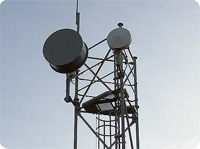Difference Between UMTS and HSDPA
 UMTS vs. HSDPA
UMTS vs. HSDPA
The Universal Mobil Telecommunications System (also known as UMTS) is a third generation (or 3G) telecommunications technology for mobile electronics. The most common form of UMTS makes use of W-CDMA (Wideband Code Division Multiple Access, which is an air interface standard that is a compulsory feature of any mobile telecommunications device of the 3G network). However, the system makes use of TD-CDMA (Time Division CDMA) and TD-SCDMA (Time Division Synchronous CDMA). UMTS is a complete network system. As such, it also covers the radio access network, the core network, and the authentication of users using the USIM cards (or Subscriber Identity Module).
High Speed Downlink Packet Access (also known as HSDPA) is also part of the 3G network; however, it is of an enhanced nature. It is a protocol that is used in mobile telephony communications in the High Speed Packet Access family – a combination of the HSDPA and HSUPA (High Speed Uplink Packet Access) that extends and improves the performance of those WCDMA protocols that are currently in existence. As such, those networks that are part of the UMTS are capable of reaching higher data transfer speeds and capacities.
UMTS requires the use of new base stations, as well as new frequency allocations. Despite these restrictions, however, UMTS is closely related to GSM (that is Global System for Mobile Communications, the most popular standard for mobile communication technology), and builds upon the concepts of GSM – most UTMS handsets support GSM in order to allow dual mode operation without any issues.
For HSDPA to function properly, a new transport layer channel had to be created (High Speed Downlink Shard Channel, or HS-DSCH) and added to the W-CDMA specification. By introducing three new physical layer channels (HS-SCCH, HS-DPCCH, and HS-PDSCH), the HSDPA network is capable of informing the user that the desired data will be sent, acknowledging information and current channel quality, and calculating how much data to send to any device the user uses in the next transmission, respectively.
UMTS has a theoretical maximum data transfer of 21 Mbits/s (in the HSDPA form). However, for those currently using UMTS handsets, an expected transfer rate of 384 kbit/s and 7.2 Mbit/s is a more accurate expectation for R99 handsets and HSDPA handsets, respectively. Most HSDPA technology shows a theoretical transfer rate of 1.8, 3.6, 7.2, and 14.0 Mbit/s. However, there are further speed increases with the availability of the HSPA+ (providing speeds of up to 42 Mbit/s on the downlink, and 84 Mbit/s with the Release 9).
Summary:
1. UMTS is a 3G telecommunications technology that makes use of the W-CDMA, as well as other permutations therein; HSDPA is part of the 3G network, but is part of the High Speed Packet Access family, therefore capable of elevated performance.
2. UMTS requires new base station and frequency allocations to thrive; a new transport layer channel had to be created and combined with W-CDMA specifications in order for UMTS to function.
3. UMTS has a theoretical transfer speed of 21 Mbit/s; HSDPA has a theoretical transfer rate of up to 14.0 Mbit/s.
- Difference Between VC++ and C++ - April 20, 2010
- Difference Between Aluminum and Carbon Arrows - April 15, 2010
- Difference Between SFTP and SCP - April 15, 2010

Good Summary
Very good information on UMTS and HSDPA. Thanks for sharing.
Awesome !
Informative post. Thanks